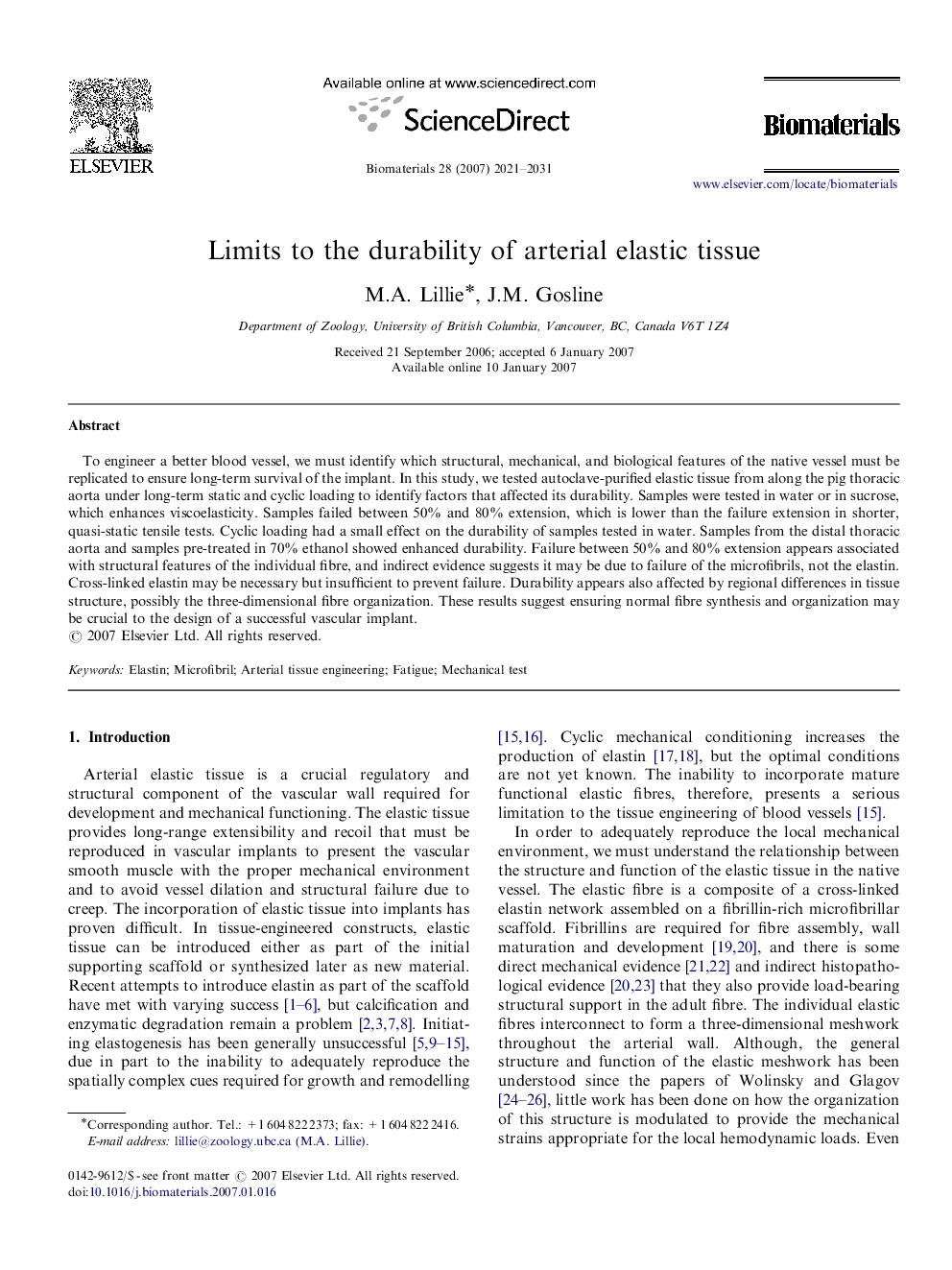| Article ID | Journal | Published Year | Pages | File Type |
|---|---|---|---|---|
| 11013 | Biomaterials | 2007 | 11 Pages |
To engineer a better blood vessel, we must identify which structural, mechanical, and biological features of the native vessel must be replicated to ensure long-term survival of the implant. In this study, we tested autoclave-purified elastic tissue from along the pig thoracic aorta under long-term static and cyclic loading to identify factors that affected its durability. Samples were tested in water or in sucrose, which enhances viscoelasticity. Samples failed between 50% and 80% extension, which is lower than the failure extension in shorter, quasi-static tensile tests. Cyclic loading had a small effect on the durability of samples tested in water. Samples from the distal thoracic aorta and samples pre-treated in 70% ethanol showed enhanced durability. Failure between 50% and 80% extension appears associated with structural features of the individual fibre, and indirect evidence suggests it may be due to failure of the microfibrils, not the elastin. Cross-linked elastin may be necessary but insufficient to prevent failure. Durability appears also affected by regional differences in tissue structure, possibly the three-dimensional fibre organization. These results suggest ensuring normal fibre synthesis and organization may be crucial to the design of a successful vascular implant.
